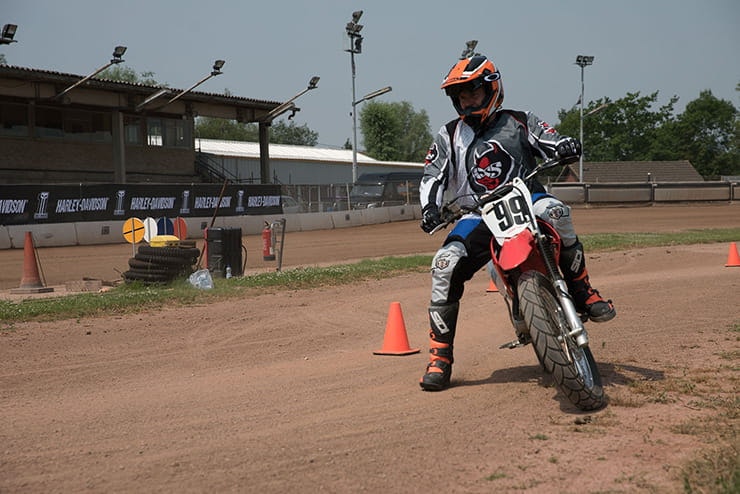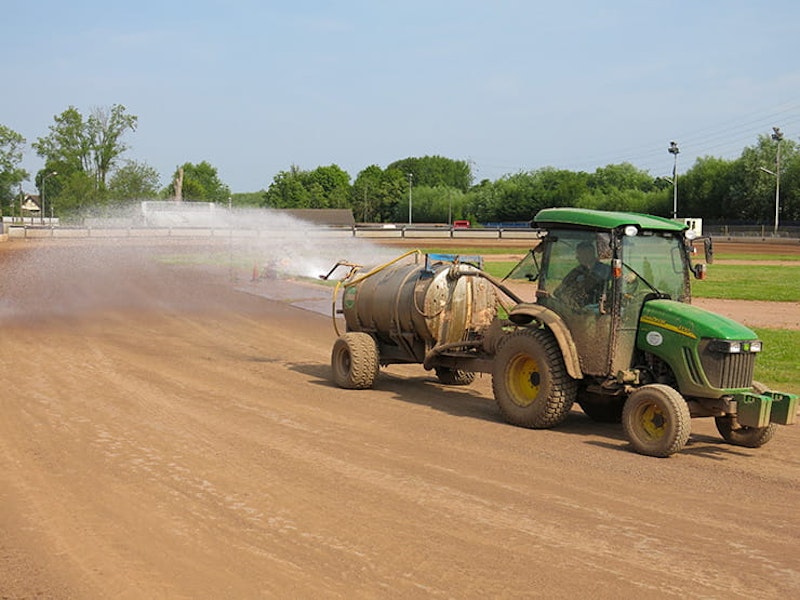DirtQuake Practice: Flat-tracking a Harley-Davidson
By Kane Dalton
BikeSocial's former Commercial Manager
28.06.2017
You could be forgiven for thinking that flat-track racing looks like a controlled crash. When Harley-Davidson invited BikeSocial to take part in this year’s DirtQuake on the new Street 750, I jumped at the chance, the only caveat being that I needed some training first; I’ve never ridden around a slippery oval track before…
I arrived early at the Rye House Speedway track. It was extremely dusty, and the hottest June day in 40 years; I guessed my swanky new motocross kit from J&S would be getting dirty, especially when a tractor drove onto the track with a large water sprinkler. The water creates grip – too much and the wet’s crazily slippery; not enough and the dust’s crazily slippery. Finding consistent grip is the challenge.
Our coach for the day was multi championship-winning Pete Boast from Champions Flat-Track School – he’d give us the basics to be safe on track during a course that costs £159. My classmates and I were all expecting to throw our legs over a 750 from the off, but I was quietly pleased when they rolled out the fleet of 100cc and 125cc enduro bikes first.
Flat-tracking a Harley-Davidson
Before his first time racing at DirtQuake, Kane Dalton gets some training…
The most important job is to be fitted with a steel shoe slider on your left foot. The slider is attached to your boot using large zip ties, and I was warned that my left leg might get tired. Strapping on a steel plate certainly adds weight, but the slider allows you to force your foot into the ground and stabilise the bike.
The morning focussed on drills, the first being body and arm movement, as well as body position on the bike. Slowly riding a slalom of traffic cones gives you the confidence to turn the machine, before attacking the same course while steadying the bike with your steel-clad foot, while feeling what the bike does when it starts to slide. There are more drills dedicated to controlling slides, and a section on braking, then you’re ready to ride the circuit’s mini oval…
I started riding really slowly, until I got a real feel for how much the bike moved around beneath me. Then I could pick up the pace. But before moving on to the large oval, we had a bit of a tussle… after catching a few slides, and seeing the rear wheel in front of me several times – yet still staying on – my confidence was building.
It was time to roll out the Harley-Davidson Street 750. This is fundamentally the same bike that you can buy, the modifications being the tweaked seat unit and disabled ABS (so you can use the rear brake to get the back out). The front brake is usually removed for flat-track racing, but in this case it’s been left on so we can slow down in the pits.
After riding a 125, the sound of the Harley was music to my ears, and going from 8bhp to about 50bhp also meant that when I gassed it, the rear lit up very easily. It was intoxicating… after my allocated laps, Pete had to stand in the middle of the track to force me back in. There are ten Street 750s being prepared for the event – six for racing and four as back-ups, which I reckon might be needed after seeing just how quickly the competitive red mist came down once we hit the track…
I’d just ridden a Harley sideways; roll on DirtQuake.
Share on social media:

